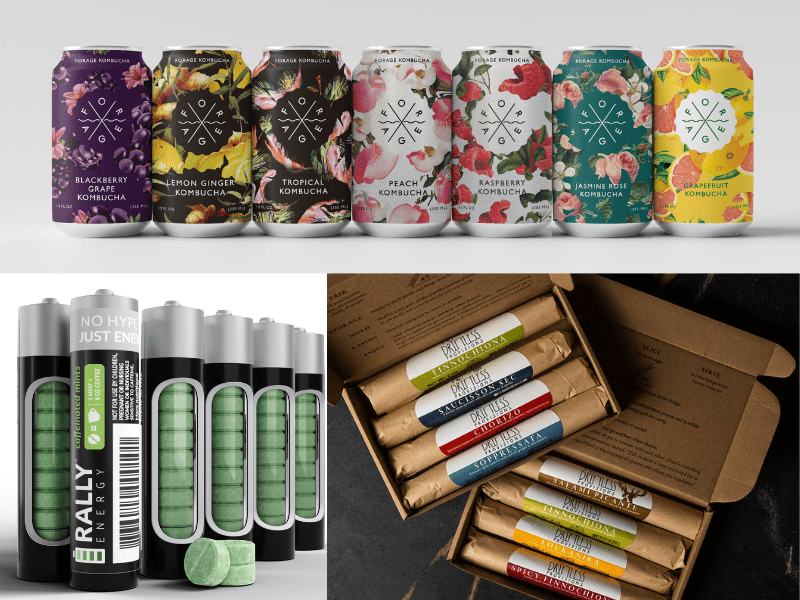In food entrepreneurship, there is no shortage of things to pay attention to. Everything from figuring out the ever-evolving consumer (and their ever-evolving tastes, preferences and dietary restrictions) to figuring out the best way to create the best product to figuring out how it all will be paid for – all of this competes for the entrepreneur’s time and attention. Quantitative measurement of key business drivers brings focus and clarity to what can be a chaotic process of entrepreneurship and provides direction that proves to be a north star during times of trial.
At the Food Finance Institute, we ask lots of questions of clients about specific things they should be measuring and watching closely. “How much do you expect to sell in 6 months, 7 months, 8 months? How much cash will you need to support those sales? What are your sales velocities for where you are currently in distribution? What is your Cost of Goods Sold (COGS) percentage?”
Answers to these questions drive action. For example, if they know they need a certain amount of sales to sustain their model but can’t get it in their current distribution, they can start researching the best markets to expand into while reaching their target consumer. If their COGS is too high in comparison with industry benchmarks, they might need to make some operational adjustments (cheaper ingredients, a new co-packer relationship, etc.) or might need to scale up more quickly than they were imagining. We help people focus on the financial and other key drivers of their business so that they can understand their business performance and make critical decisions about strategy and operations.
On our podcast this week, Amanda Sweetman talks about The Farm at St. Joe’s, a farm that is integrated with the Ann Arbor campus of the Saint Joseph Mercy Health System. The Farm at St. Joe’ provides 9,000 lbs. of produce to the community, including through a CSA style program for staff and community members in partnership with 12 other farms, generating $82,000 of revenue for those farms. These numbers are a point of pride, but are not the whole story in an enterprise and institution that cares about improving people’s health outcomes or reducing feelings of isolation, the biggest social determinant of health. Thus, they also measure how many people receive prescriptions for veggies through their Produce to Patients program (3,500 in 2018) and how many people attend their farm and other events. Because the Farm at St. Joe’s has these larger impact goals in addition to production and sales goals, they track them closely to evaluate the success of the farm, within their unique context.
We encourage new and aspiring food entrepreneurs to measure what matters in their food business: who are they serving, the key financial drivers of their business model, and how much money they need to grow, among other things. Getting quality data about their financial drivers, customers and sales performance (as well as setting up systems to easily pull and report on this data) takes time and usually money, but is well worth it for the clarity it provides.
And now, our roundup of the best food and beverage finance news, events and resources from around the web…
Business Model Insights
- Thinking About Starting a Food-Related Business? Take This Advice – “Don’t get caught short. One of the biggest mistakes I typically see is that first-time operators of restaurant or hospitality retail businesses underestimate the financial capital that is required to both open the business as well as maintain operations for the first year. More often than not, fledgling operators do not provide for an adequate cushion to cover pre-opening expenses or first-year working capital needs.”
- 6 Cash Flow Strategies You Probably Aren’t Using (Investors Community Bank)
- 3 tips for scaling your growing food business with a co-packer (FoodDive)
 Raising Capital
Raising Capital
- Cash is king, so plan accordingly (New Hope Network) – “An early stage brand struggling to gain traction needs a lot of cash. A brand that has found its tribe and is growing rapidly needs even more. I promise you one thing, whatever you think you need in terms of cash, you have underestimated by a factor of at least 2X. Every decision you make has a cash implication. Channel, distributor, retail outlet, trade plan, production, inventory, team … everything has a bearing on your cash position. If you aren’t clear as to how a particular action effects cash, then don’t act on it until you understand it fully.”
- How West Oakland Financed Its Own Grocery Store (Next City)
- 9 Elements Of Every New Venture That Investors Expect (Startup Professionals)
CPG/National Brands
- Private Label Is Upending Omnichannel Landscape (Neilsen) – “Store brands account for 17% of consumer packaged goods (CPG) dollar sales in physical retail stores. Private-label sales have also increased by $7.9 billion across brick-and-mortar stores in the past three years. CPG private label accounts for 3% of online dollar sales, up from 1.3% two years ago. Emerging, disruptive brands have strong foundations online—and some are either nonexistent in brick-and-mortar or have a very small physical presence. Private label has emerged as the new challenger brand in e-commerce.”
- Investing in the Future of Food: 4 strategies to increase the success of a new product launch (Food Navigator)
- How Co-ops Support Small Brands (Project Nosh)
Market Trends
- 66% of shoppers will buy more groceries online in the next 5 years (GroceryDive) – “In-store grocery shopping remains the primary method, with 97% of shoppers saying they shop in-store. Among all survey respondents, 52% currently buy some groceries online, and 21% are open to the possibility. These numbers are a good reminder to grocers that the in-store experience is still essential, but that shoppers are increasingly demanding an omnichannel experience.”
- The evolution of US grocery shopping: 10 trends to watch (Food Navigator)
- Consumers often find food products are too sweet (Food Dive)
 Farming and AgTech
Farming and AgTech
- Farmers and Entrepreneurs May Need to Rethink the Path to Agtech Adoption (AgFunder News) – “Agtech startups and investors alike have learned how difficult it can be to get a farmer to open his wallet for a new piece of agtech. On-going trade issues and challenging weather during planting make this year no different. Innovators and investors are finally moving beyond the “widget problem” – isolated tools and tech that address only single problems – to broader systems of systems and solution-oriented offerings.”
- Record-Breaking Rainfall Limits Harvest For Midwest Farmers (NPR)
- Understanding Farm Financials: The Numbers Coach (Compeer)
 Deals/M&A
Deals/M&A
- Big CPG Takes a Bite of Growing Plant-Based Meat Market (Project Nosh) – “In 2019, meat substitutes have seen a 24% increase in dollar sales year over year to become a $671 million industry, with 60% of American consumers interested in consuming less meat. Over the next 10 years, plant-based meat sales are predicted to increase by 1000% to reach $140 billion.”
- June 2019 Nutrition Capital Network News (NCN)
- St. Albans Cooperative Creamery, Dairy Farmers of America announce merger (Refrigerated & Frozen Foods)
 Industry Events
Industry Events
- Turn Your Passion Into Profit At A Farmers Market Masterclass (Sari Kimbell Consulting) – Free, multiple dates in July online
- Wisconsin FaBcap Accelerator 4 Applications (Wisconsin FaB) – Free to apply, applications due online by 9pm 8/2
- Western Foodservice and Hospitality Expo (California Restaurant Association) – $, 8/25 – 8/27 in Los Angeles, CA
- Expo East 2019 (New Hope Network) – $, 9/11 – 9/14 in Baltimore, MD
- Guiding Wisconsin Farmers to Legal Resilience (Farm Commons) – Free, 9/13 in Madison, WI
- Food Culture Forecast (Hartman Group) – $, 9/29 in Chicago, IL
- Food and Ag Ideas Week (Grow North MN) – $, 10/15 – 10/20 in Minneapolis, MN
- National Farm Viability Conference 2019 (Multiple Hosts) – $, 10/22 – 10/24 in Redwing, MN
- Regenerative Earth Summit (At The Epicenter) – $, 10/29 – 10/30 in Boulder, CO
- Annual Farmer Cooperatives Conference (University of Wisconsin Center For Cooperatives) – $, 11/6 – 11/8 in Minneapolis, MN
- Good Food Financing and Innovation Conference (FamilyFarmed) – $, 11/3 in Chicago, IL
- Business Tax Basics (UW-Madison SBDC) – $, 11/19 in Madison, WI
- National Good Food Network Conference (Wallace Center) – $, 3/10 – 3/13 in New Orleans, LA




